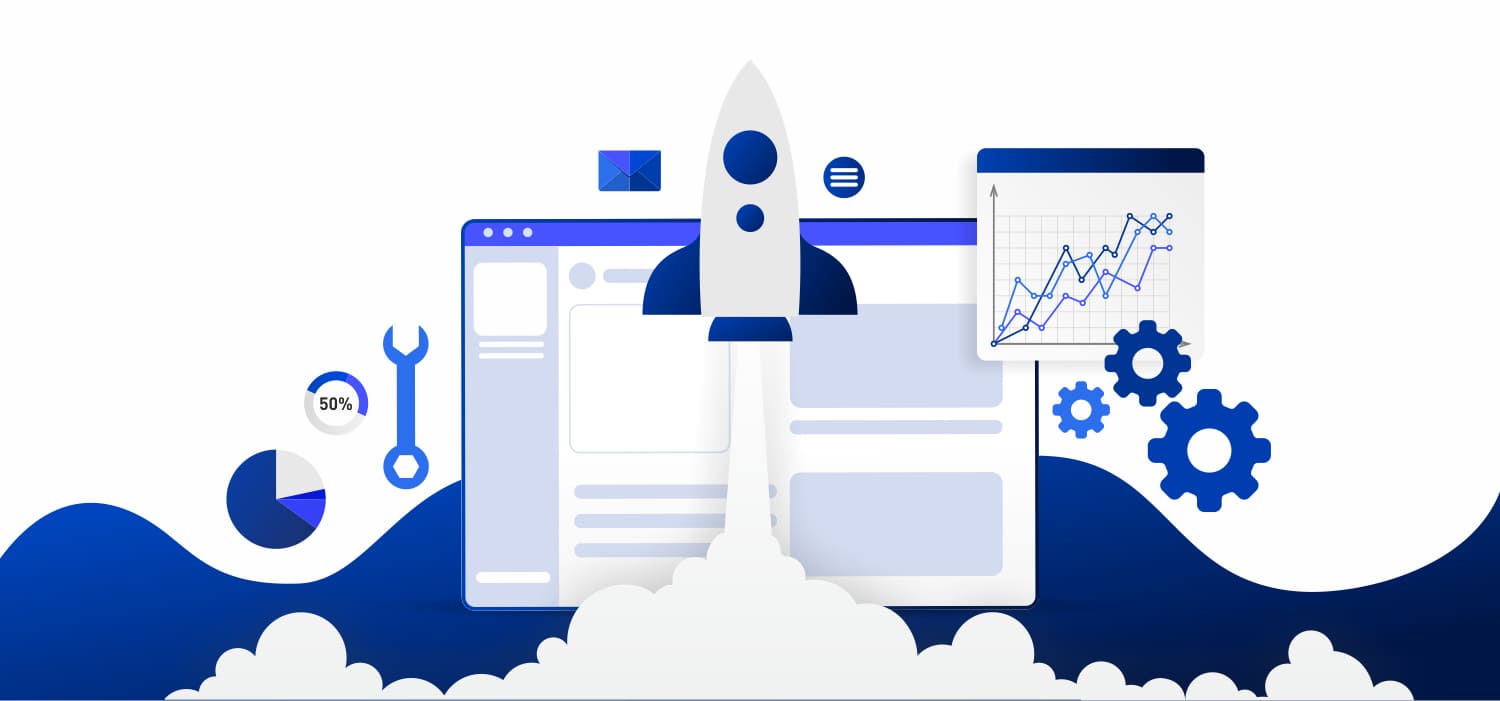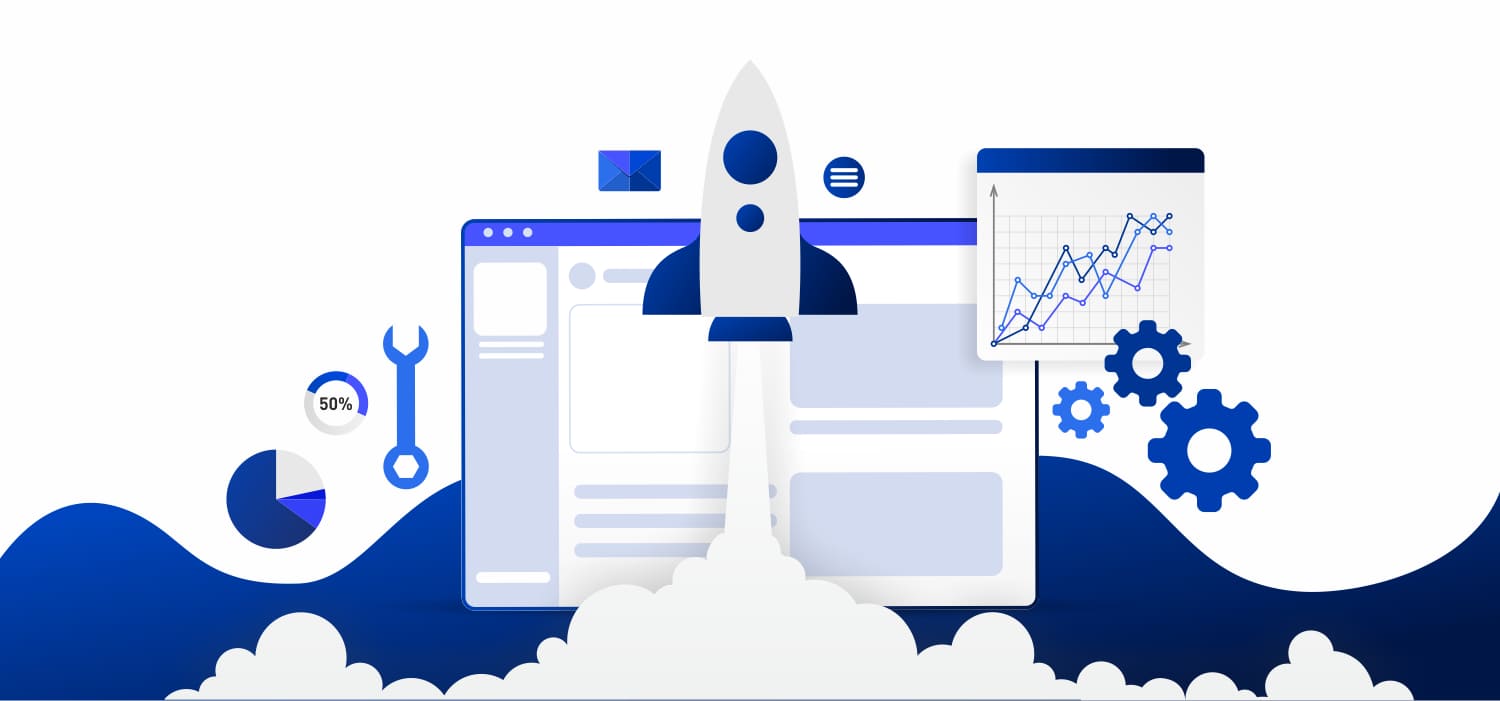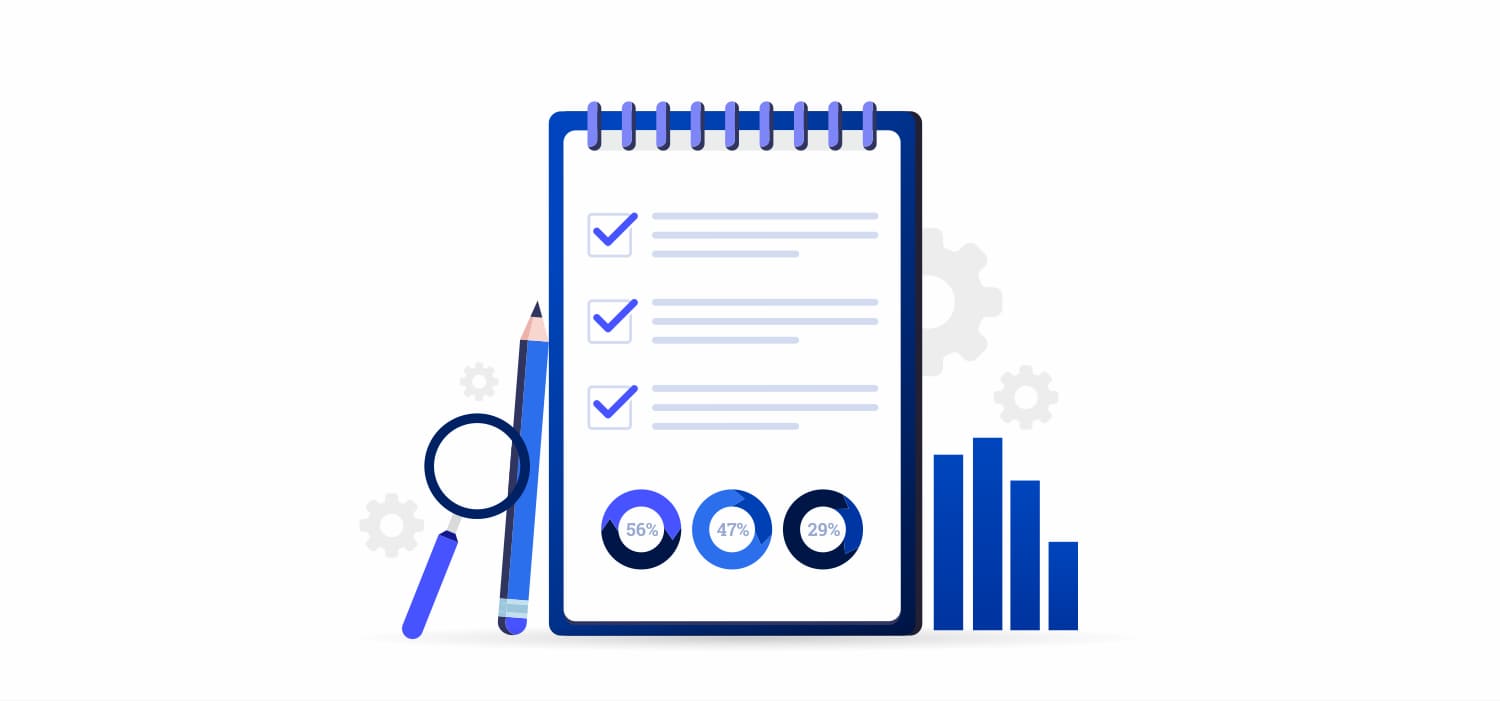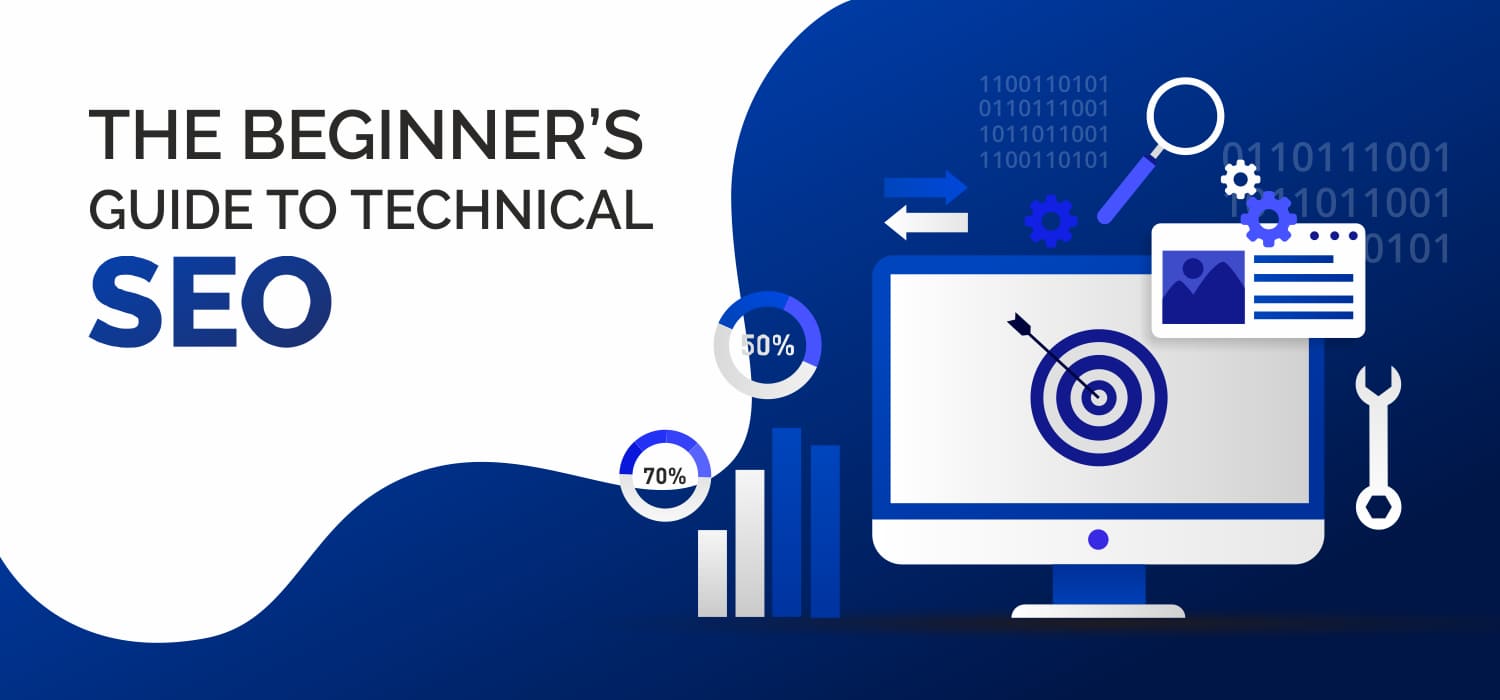Did you know that your traffic and revenue directly depend on SEO optimization of your website? How come? To answer that, firstly you need to ask yourself: what make sites become the best version they can be? Perhaps, healthy and functional sites that have been optimized based on market and keyword research, content relevance to search intent, backlink profiles, and much more. In short, an effective website should have reached its full SEO potential.
Actually, while technical SEO is viewed as a skeleton of the website, on-page and off-page optimization allow search engines easily index and crawl the web page. Consequently, a smart SEO practice helps your webpages rank highly in top search positions.
At 2muchcoffee, we believe that understanding SEO fundamentals and the capability to use basic SEO skills are crucial for your business. As one of the marketing tactics, implementing SEO is a guarantee that your website achieves great results in Google ranking. Therefore, this article will briefly introduce you to the concepts of on-page and off-page optimization while focusing a bit more on the main components of technical SEO.

What is SEO and Why Do You Need It?
Search engine optimization (SEO) is the process of increasing the online visibility of a website/webpage by means of increasing the quality and quantity of website traffic. There is a tendency to underestimate SEO strategy. However, in reality, SEO leads to better user experience, a higher conversion rate, builds brand credibility and helps establish brand awareness.
Precisely, following SEO best practices, you will achieve:
Search engines can access and index your website easily;
Unique content which corresponds to the intent of the searchers;
The website is becoming more structured which simplify the process of crawling;
Search engine spiders understand the context of your content better;
Giving search engine algorithms reasons to trust your website and rank it higher than other websites.
Search engines are using complex algorithms to determine which pages to include in their index and the order of the search results list. That is why every SEO strategy consists of on-page, off-page and technical SEO of the website. So, let’s elaborate on the mentioned components.

On-page SEO vs Off-page SEO
On-page SEO refers to the optimizing elements on a webpage to improve search ranking and online visibility. In this case, the process of optimization is focusing on the main components on the webpage, such as content, title, meta description, etc.
The main features of on-page SEO include:
Unique and valuable content. The content of your webpage is a crucial element that influences the quality of web traffic. That is why valuable and unique information is the must-have of your webpage. The content should not duplicate the other authors' work and have to provide a piece of new and up-to-date information. The social validation leads to the sharable content which potentially could explode the traffic.
SEO optimized content. Fresh content is still a key to beating out your competitors in the search engine results page. In this case, your content should be SEO friendly, which means it should contain the relevant keywords. Keywords on your website are a significant way in which Google (and other search engines) find your site for these searched words. One of the best SEO tools is Ahrefs which is quite helpful in researching relevant keywords and backlinks as well as exploring competitors.
The title and meta-description. In other words, these are the representative of your webpage in Google. Both title and meta-description are decision-making features for people visiting your website. In this case, the most important function of these elements is to activate the searchers to click on your link. While the title has to be catchy and motivate the user’s interest, meta-description has to be eloquent and describe the main objectives.
Design and links. Another factor that affects on-page SEO is a clear design that can be adaptive to different devices, such as mobile phones, tablets, etc.. It is important to access all of the content and images on all devices.
Off-page SEO
Off-page SEO is related to the process of link building and getting mentions from the external websites to increase trust during the website ranking process. Basically, any activity that occurs outside of your own website that helps to improve your search ranking position might be considered as an off-page SEO strategy.
The basic off-page SEO methods include:
Link building. Building backlinks is at the heart of off-page SEO. Search engines use backlinks as indications of the linked-to content's quality, so a site with many high-value backlinks will usually rank better than an otherwise equal site with fewer backlinks. There are three main types of links, defined by how they were earned:
Natural links are given without any action on the part of a page owner.
Manually built links are acquired through deliberate link-building activities. This includes things like getting customers to link to your website or asking influencers to share your content.
Self-created links are created by practices such as adding a backlink in an online directory, forum, blog comment signature, or a press release with optimized anchor text. Some self-created link building tactics tend toward black hat SEO and are frowned upon by search engines, so tread lightly here.
Despite the fact, how links were produced, those that offer the greatest contribution to SEO efforts are generally those that pass the most equity. There are many signals that positively contribute to the equity passed, such as: the linking site's popularity, how related the linking site's topic is to the site being linked to, the "freshness" of the link, authority of the linking domain and page, the anchor text used on the linking site, etc..
Social media marketing. A lot of social media sites use 'nofollow' tags, meaning you don't get any SEO value from links on your social media profiles or links you share through your social media updates. Although, these links may not benefit your search engine rankings, they're still links from an external source into your website. Plus, search engines are increasingly using social cues to identify authoritative websites and content. Use the links in your social media profiles wisely; point them to your website to direct viewers of your profiles back to your website.
Guest blogging. Guest blogging is probably the most effective way to generate quality inbound links to your website. Yes, it requires more content creation on your part, but the results are lasting and powerful. Think about it: what business that understands the importance of inbound marketing isn't trying to provide a steady flow of fresh content? If you were struggling to fill your blogging queue with valuable content, wouldn't you jump at the opportunity to publish a guest post from a fellow qualified blogger? As a blog manager, they get fresh content with little effort. As a contributor, you get control over the anchor text and URLs for the keywords you're targeting.

Technical SEO Fundamentals
An effective SEO strategy isn’t just about content and link building practices. It is about constructing the foundation for all your SEO effort. Taking that into account, technical SEO refers to the process of optimizing your website for the crawling and indexing phase. With technical SEO, you can help search engines access, crawl, interpret and index your website without any problems. That is why technical SEO is a necessary part of the overall process of creating a fully optimized website.
To understand better the relevancy of technical SEO, firstly you need to understand how a search engine works. Thus, there are three main components of search engines: crawling, indexing and picking results.
The process goes like this: crawling means scanning the website, its sections, content, keywords, headings, etc. by thousands of small bots. Crawlers detect all hypertext links on a website that point to other websites. Then they parse those pages for new links over and over again. Indexing could be seen as a large catalog full of crawled websites, so when a user submits a search query, the search engine digs into the index and pulls out the best matching results.
Shy is Technical SEO Important? There might happen that the website page has a slow load time, some pages have duplicate content, the user experience is quite poor and your website is missing from Google Search. All mentioned factors may indicate that your website needs technical SEO optimization from the team of specialists.

Technical SEO Best Practices
We decide to share some recommendations about technical SEO optimization. The tips could be used even without the technical background, so you can be familiar with the basic principles of technical SEO.
Website speed
One of the factors that can help rank your website is site speed. Faster sites have lower bounce rates and higher conversion rates. PageSpeed Insights is a great tool to test your website speed. In case outcomes do not satisfy your expectations, you should do small adjustments, like:
Limit redirects: each page should have no more than one redirect. When redirects must be used, use 301 for permanent redirects and 302 for temporary redirects.
Minify resources: use minification to strip unnecessary code from all of your assets, including CSS, HTML, JavaScript, images, and videos.
Optimize your images: images account for 60 percent of the average web page’s size. A few of the simpler tips: pick the best raster formats for your images, eliminate unnecessary image resources, and try to make sure that all images are compressed, resized, and scaled to fit display sizes.
Optimize CSS delivery: inline small CSS files directly into the HTML document (just don’t inline large CSS files or CSS attributes on HTML elements).
Enable compression: eliminate unnecessary data whenever possible.
Eliminate Duplicate Content
If your website has duplicate content, it means two or more pages have identical or nearly identical content, and Google is confused about which page to rank first. As a result, you can expect to see your search rankings falter which, in turn, will also affect the rate of your website traffic. Once you’re aware of which pages are considered duplicate, you can begin working to fix them. The obvious solution is to make sure your pages are unique. You can do this by editing the content on your pages or by removing some of the duplicate pages altogether. If your pages have to have duplicate content for some reason, you can also add a rel="canonical" link to one of them to let the search engines know which page you want them to show in search results.
Optimize your XML sitemap
An XML sitemap is a file intended to be read by search engine robots. This file includes a lot of behind the scenes activity of the webpage. This can include unique information about each URL which will provide search engines with additional data about that page. This information allows search engine robots to analyze the content on your site in a more logical and intelligent manner.
By creating a free account in Google Search Console or Bing Webmaster Tools, and uploading your sitemap, you are able to inform search engines of the presence of your new site and what pages exist. One option is through a site called xml-sitemaps.com. This will allow you to create a free sitemap, but only up to 500 pages. Most free online sitemap creation tools will have similar limitations. The preferred method is to use a crawling tool such as Screaming Frog to help create a sitemap.
Optimize your Robots.txt
The robots.txt is a text file that is placed in the root directory of a website. These are one of the first things that Googlebot looks for when crawling a site. It’s recommended to add a robots.txt to your site and include a link to your sitemap.xml. The robots.txt file is a protocol that allows you to specify which pages should or should not be indexed and specify the rate at which files are accessed by search engine robots.
There are many ways to optimize your robots.txt file, but it’s important to take caution in doing so. A developer might accidentally leave a sitewide disallow in robots.text, blocking all search engines from crawling sites when moving a dev site to the live site. Even after this is corrected, it could take a few weeks for organic traffic and rankings to return. There are many tips and tutorials on how to optimize your robots.txt file.
Optimize your 404 Page
When your website has 404 errors, it means that you have pages that do not exist. In short, they’re broken, and this doesn't make for the best user experience. This is most likely caused from when you had a page that originally lived at a specific URL, but you changed the URL later, or maybe you didn’t need the page anymore, so you unpublished it. Once this happens, you want to make sure you set up a 301 redirect. This allows the old page to bring a visitor to the new page it’s being redirected to.
When a page is broken, it doesn’t allow Google to crawl it, which can negatively affect your search rankings. What’s more, if you’ve linked to this page from other pages, or external sources have linked to your page, you’ll lose the authority you once had. Once you’ve rectified your broken pages and links, it’s a best practice to generate a newly updated sitemap to submit to Google to let it know you’ve made these changes.
Conclusion
SEO strategy is a great way how you can improve your business, create trustworthy relations with your users, understand the environment of the web and increase your traffic as well as profitability.
When your website is fully optimized, it’s much easier for search engines to access your site, as well as crawl, interpret and index it. Then, your web pages get better ranking whenever they’re relevant to a search, and you get more traffic. If you have one too many technical issues on your website, the consequences can be severe. It won’t matter how good your content is, if the search engine can’t properly identify it, you won’t get traffic. That’s why it’s so important to focus on technical SEO. Otherwise, your effort to create high-quality content goes to waste.
We hope the article was useful for you and in case you have any questions or suggestions do not hesitate to contact our team and we assist you in any inquiries!





